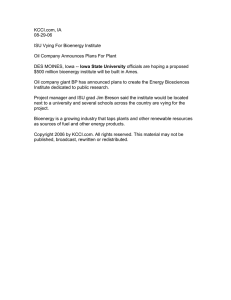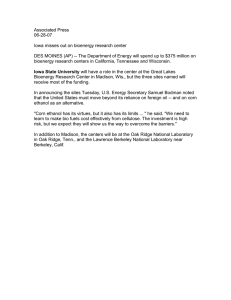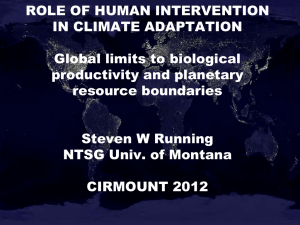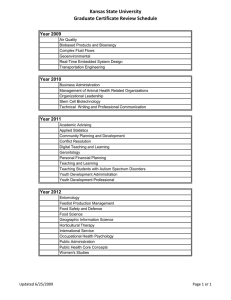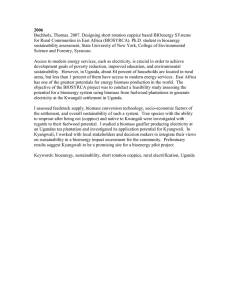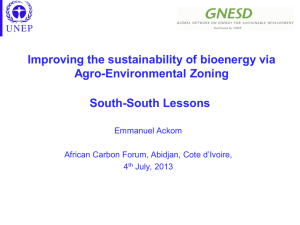HERE
advertisement
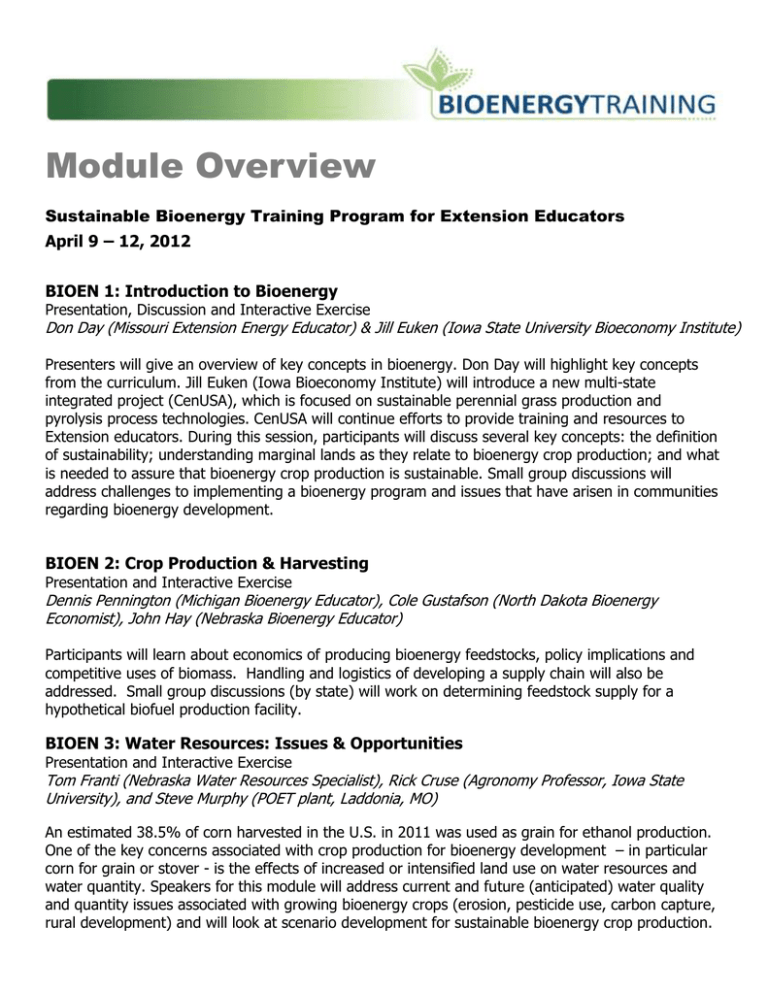
Module Overview Sustainable Bioenergy Training Program for Extension Educators April 9 – 12, 2012 BIOEN 1: Introduction to Bioenergy Presentation, Discussion and Interactive Exercise Don Day (Missouri Extension Energy Educator) & Jill Euken (Iowa State University Bioeconomy Institute) Presenters will give an overview of key concepts in bioenergy. Don Day will highlight key concepts from the curriculum. Jill Euken (Iowa Bioeconomy Institute) will introduce a new multi-state integrated project (CenUSA), which is focused on sustainable perennial grass production and pyrolysis process technologies. CenUSA will continue efforts to provide training and resources to Extension educators. During this session, participants will discuss several key concepts: the definition of sustainability; understanding marginal lands as they relate to bioenergy crop production; and what is needed to assure that bioenergy crop production is sustainable. Small group discussions will address challenges to implementing a bioenergy program and issues that have arisen in communities regarding bioenergy development. BIOEN 2: Crop Production & Harvesting Presentation and Interactive Exercise Dennis Pennington (Michigan Bioenergy Educator), Cole Gustafson (North Dakota Bioenergy Economist), John Hay (Nebraska Bioenergy Educator) Participants will learn about economics of producing bioenergy feedstocks, policy implications and competitive uses of biomass. Handling and logistics of developing a supply chain will also be addressed. Small group discussions (by state) will work on determining feedstock supply for a hypothetical biofuel production facility. BIOEN 3: Water Resources: Issues & Opportunities Presentation and Interactive Exercise Tom Franti (Nebraska Water Resources Specialist), Rick Cruse (Agronomy Professor, Iowa State University), and Steve Murphy (POET plant, Laddonia, MO) An estimated 38.5% of corn harvested in the U.S. in 2011 was used as grain for ethanol production. One of the key concerns associated with crop production for bioenergy development – in particular corn for grain or stover - is the effects of increased or intensified land use on water resources and water quantity. Speakers for this module will address current and future (anticipated) water quality and quantity issues associated with growing bioenergy crops (erosion, pesticide use, carbon capture, rural development) and will look at scenario development for sustainable bioenergy crop production. Steve Murphy (from POET) will discuss current water issues in ethanol processing facilities, including state of the art water reuse - including new technologies, future directions, and anticipated water use for processing cellulosic feed stocks. Small group discussions will address water use for growing crops and operating a hypothetical biofuel production facility. BIOEN 4: Community Economic Development Presentation, Discussion & Interactive Exercise Dan Downing (Missouri Community Development Educator, Johanna Reed-Adams (Missouri Community Leadership Development State Specialist), Tom Johnson (Missouri Community Public Analysis Center) Johanna Reed-Adams, Ph.D., Community Leadership Development State Specialist, Mo. will introduce and discuss fundamental concepts of community development including identification of community opinion leaders, identification of decision makers, and other community social science dimensions. Tom Johnson, Director Community Public Analysis Center (CPAC) will discuss economic and policy issues in renewable energy, and will introduce the Biopower tool kit, a web based calculator that helps potential investors determine the feasibility of various types of biopower production facilities in any location in the country. Additionally, Dr. Johnson will discuss two other aspects of this industry— how quickly this sector will grow and what farmers need to increase their supply of biomass. Dan Downing will discuss the connections between these two presentations and the curriculum on community development and bioenergy development. Small group discussion activities will address how these concepts can be applied to the hypothetical biofuel facility.
